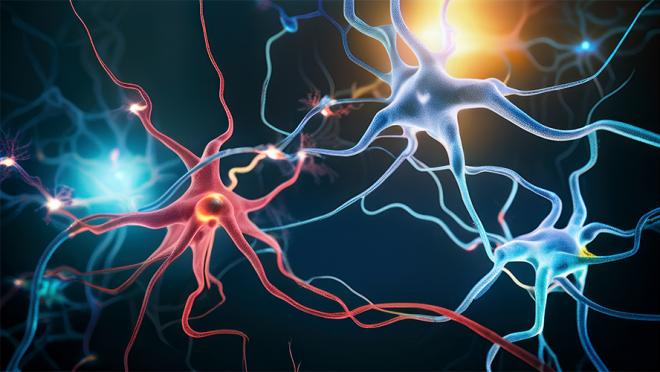
Diversity is a hallmark of life. Variation among species and cell types within a single organism is key for supporting the myriad functions and adaptations needed to survive. A new study from the Krembil Brain Institute has explored the importance of brain cell diversity for brain function and health.
“In previous studies, we found that individuals with epilepsy have lower cell diversity in a brain region that is responsible for the generation of seizures,” says Dr. Taufik Valiante, co-senior author of the study. “We also demonstrated that when neurons behave too much like one another, neuronal networks become unstable.”
“We wanted to expand on this work and understand more generally why there are so many distinct neurons within the same regions of the healthy human brain,” explains co-senior author Dr. Jérémie Lefebvre. “While scientists have previously suggested that brain cell diversity is just noise, our research into epilepsy suggested that it protects against the development of seizures.”
To explore this possibility, the team applied computational tools to model neuronal networks—complex webs of interconnected neurons.
“We applied mathematical tools that were developed in the field of ecology and have been traditionally used to study ecosystems, but rather than using them to study food webs, we used them to study neuronal networks,” explains Dr. Hutt, first author of the study. “The specific type of diversity that we explored was that related to neuron excitability—how easily a neuron will send a signal after receiving a stimulus.”
The researchers exposed their neural networks to a slowly changing signal that mimics what a neuron might experience in the environment. They found that the networks were less stable when their neurons were not diverse. This instability manifested as sudden shifts in neuron activity levels.
“Our models revealed that cellular diversity bolsters the brain’s resiliency, making it better able to maintain functions in the face of ageing, disease and injury,” says Dr. Valiante.
The team suggests that a deeper understanding of the diversity among brain cells could improve our understanding of various neuropsychiatric disorders and how to treat them.
“Our findings may explain why drugs that are used to treat epilepsy fail in so many patients. By shedding light on the underlying mechanisms of the disease, this research could pave the way for improved therapies,” says Dr. Valiante. “Importantly, changes in cell diversity are likely not limited to epilepsy, but also play a role in various neurodevelopmental and neurodegenerative conditions.”
These findings serve as a striking reminder of the fundamental role that diversity plays in the resilience of natural systems in the face of change. This truth applies not only to neural circuits but also to humans, communities and other complex systems.
This work was supported by the Natural Sciences and Engineering Research Council of Canada, the Krembil Foundation and the UHN Foundation. Dr. Valiante is an Associate Professor in the Department of Surgery at the University of Toronto. Dr. Jérémie Lefebvre is an Associate Professor in the Department Mathematics at the University of Toronto and an Associate Professor of Biology at the University of Ottawa. Dr. Axel Hutt is Research Director at the National Institute for Research in Digital Science and Technology in France.
Hutt A, Rich S, Valiante TA, Lefebvre J. Intrinsic neural diversity quenches the dynamic volatility of neural networks. Proc Natl Acad Sci U S A. 2023 Jul 11;120(28):e2218841120.

Neurons communicate with each other to form complex networks. Researchers can assess diversity within neural networks by measuring how individual cells respond to excitatory and inhibitory inputs.




